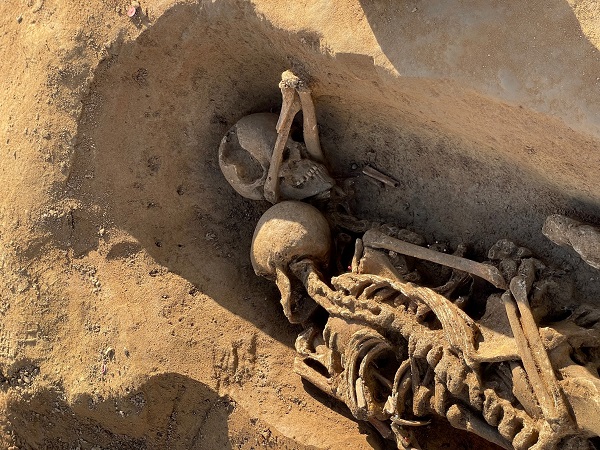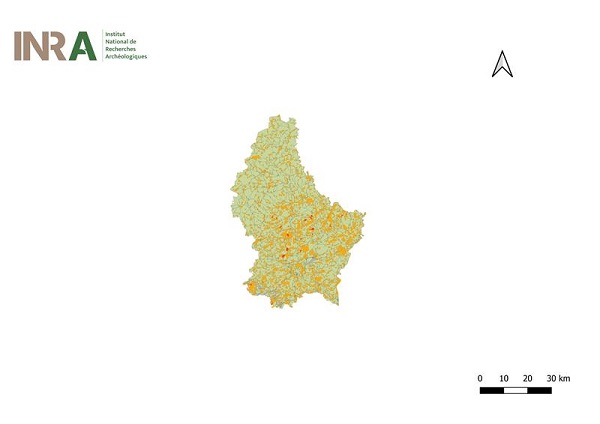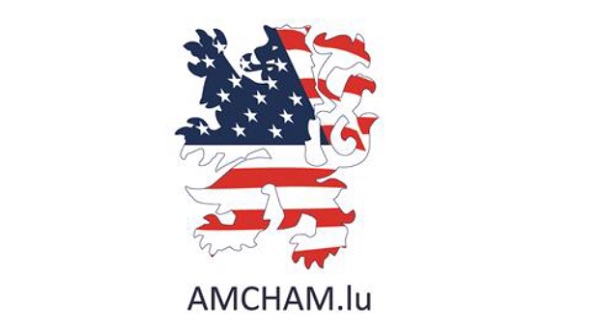 Merovingian Cemetery in Contern excavated by the National Institute for Archaeological Research (INRA);
Credit: C. Colling/INRA
Merovingian Cemetery in Contern excavated by the National Institute for Archaeological Research (INRA);
Credit: C. Colling/INRA
Chronicle.lu has teamed up with Luxembourg's National Institute for Archaeological Research (Institut national de recherches archéologiques - INRA) for a series of articles on archaeological digs and discoveries around the Grand Duchy.
The series explores digs spanning from prehistoric to Roman and medieval times, highlighting key finds and what they reveal about Luxembourg’s past. It also sheds light on the work of the INRA and its approach to archaeological and historical research.
The first article in this series looks at the legal situation around archaeology.
Luxembourg's archaeological tradition is relatively recent. The very first legislation regarding both archaeology and archaeological heritage dates back to 1927 and 1937, respectively. At that time, archaeological heritage was the responsibility of the Ministry of Education, and the public servants in charge of archaeological heritage were professors and teachers. The first archaeologists were hired by the State in the 1960s, following the promulgation of a new law regarding archaeological excavations in 1966. Since then, the Ministry of Culture (formerly Ministry of Art and Science) has been responsible for archaeology and archaeological heritage across the national territory. The legislation regarding the protection and conservation of national monuments dates back to 1983.
In 2011, the National Archaeological Research Centre (Centre national de recherche archéologique - CNRA) was legally founded to manage archaeological heritage. Following the entry into force of the law on cultural heritage of 25 February 2022, the CNRA became the National Institute for Archaeological Research (Institut national de recherches archéologiques - INRA).
In compliance with the law of 2022, one of the main missions of the INRA is to apply the principle of preventive archaeology. This principle aims to achieve two objectives:
- To protect archaeological remains from human impact, particularly through undocumented destruction caused by construction, demolition or earthworks (filling and digging), as well as natural risks.
- To provide greater planning security for property owners, project managers and / or developers within the scope of the planned works.
The principle of preventive archaeology replaced previous practices, which, in the event of a chance discovery, led the State to halt a construction project, resulting in unforeseen delays and additional costs.
In order to achieve the objectives of this preventive archaeology principle, the INRA has established an archaeological observation zone (zone d’observation archéologique - ZOA) on the basis of the inventory of archaeological heritage and additional information and data from state or municipal authorities responsible for the use, occupation, study or protection of the surface or subsurface, or in charge of excavation and development projects. As a supervised zone, the ZOA forms an integral part of any plan or project for land development, municipal planning or urban development, and is the decisive basis for the application of an archaeological assessment procedure or otherwise.
In accordance with article 4 of the law of 2022, except for certain development projects that are exempt from archaeological assessment, all construction, demolition, embankment and land-clearing works planned on land located in the ZOA must be submitted to the INRA for an archaeological assessment.
Following the archaeological assessment, a ministerial prescription will be issued to the applicant. This prescription may include one of the following:
- a waiver of archaeological constraints for land deemed to have low archaeological potential;
- a requirement for an archaeological survey;
- a requirement for preventive archaeological excavations.
In April 2025, the law of 2022 was amended. Since then, the State covers the costs of preventive archaeological excavations. However, the project developer is responsible for covering the costs associated with archaeological surveys.

(Image of ZOA; Credit: INRA)








